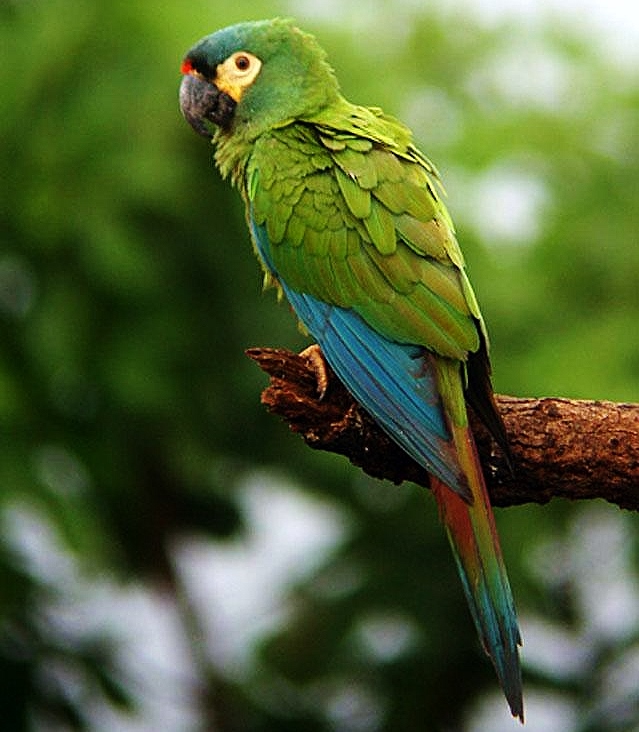 |
| (Photo from Free Pet Wallpapers) |
Common name:
blue-winged macaw (en); maracanã-verdadeira (pt); ara d’Illiger (fr); maracaná afeitado (es); rotrückenara (de)
Taxonomy:
Order Psittaciformes
Family Psittacidae
Range:
This species is found in Brazil, from Rondônia and Pernambuco south to Paraná, and marginally into Paraguay and Argentina.
Size:
These birds are 36-43 cm long and weigh 250-280 g.
Habitat:
The blue-winged macaw is found in tropical rainforests, mangroves, dry forests and dry savannas, particularly gallery forests and forest edges. They are present from sea level up to an altitude of 1.000 m.
Diet:
They feed on seeds and fruits, namely those of Cnidoscolus phyllacanthus, Jatropha sp. and Guazuma ulmifolia, as well as introduced species like Melia azederach and Casuarina.
Breeding:
In north-eastern Brazil the blue-winged macaws breed in December-February, but this varies geographically. They nest in tree holes, where the female lays 2-4 eggs. The eggs are incubated for 26-27 days and the chicks fledge 70-80 days after hatching. They reach sexual maturity after 2-4 years.
Conservation:
IUCN status – NT (Near-Threatened)
This species has a very large breeding range, but the global population is estimated at just 1.500-7000 individuals. The population is declining at a moderately rapid rate, due to habitat loss to deforestation, capture for the cage bird trade and persecution as a crop pests, especially in Argentina.







